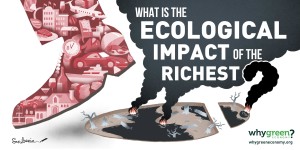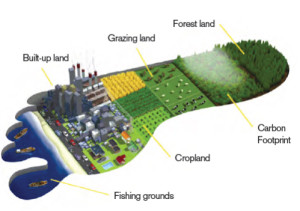Ecological footprint of the richest: China country profile
Introduction
 This country profile is part of the research on the inequality of overconsumption which attempts to quantify the full ecological footprint of the richest people in different countries around the world. Read a summary of the working paper published by the Global Sustainability Institute, Anglia Ruskin University (read the full working paper).
This country profile is part of the research on the inequality of overconsumption which attempts to quantify the full ecological footprint of the richest people in different countries around the world. Read a summary of the working paper published by the Global Sustainability Institute, Anglia Ruskin University (read the full working paper).
As there is no data or research available on the ecological footprint of the richest the focus here is on High Net Worth Individuals in the countries where they are concentrated: the United States, Japan, China, United Kingdom and France.
Identifying the richest people in China
Total population: 1.3 billion in 2015 (Source: CIA World Factbook, July 2015 estimate)
This research uses the number of High Net Worth Individuals to identify the richest people in China. HNWI’s are defined as “having a minimum of US$1 million in investable wealth, excluding primary residence, collectibles, consumables, and consumer durables”. In 2014 there were 890,000 HNWI’s in China (Source: Capgemini and RBC Wealth Management)
Ecological footprint indicators
This research uses the ecological footprint as a reference point to discuss the overconsumption by the richest people. The Global Footprint Network methodology explains that the “ecological footprint of a person is calculated by considering all of the biological materials consumed and all of the carbon dioxide emissions generated by that person in a given year.” This includes a person’s consumption of products from fisheries, cropland, grazing land, forests (wood and capture of carbon dioxide), and also use of urban land (Source: Global Footprint Network).
Lack of data on the richest people
There is currently no data available to accurately quantify the different components of the ecological footprint of the richest people in China e.g. their total carbon footprint. The closest information available relates to the richest 10% and is based on household expenditure surveys (see methodology for discussion of strengths and weakness of using this metric).
There is a focus on fuels for private transport and meat as two key indicators as well as looking at total expenditure. Private transport and food have been identified as the main sources of individuals’ environmental impact in developed countries (Peattie and Peattie, 2009). These two indicators represent examples of direct (fuel used in private vehicles) and indirect (meat) greenhouse gas emissions. It is important to cover both types of indicator because there are numerous studies that show the majority of emissions in developed countries are often indirect, for example from food, consumer electronics, clothing and recreation (Capstick et al., 2015; Büchs and Schnepf, 2013; Druckman and Jackson, 2008).
| China: Household annual expenditure in 2012 | Richest 10% (urban and rural) | |
|
Total expenditure
|
173,175 Yuan (Richest 10% spend 14 times as much as poorest 10%) |
|
|
Private transport (Transport and communications) |
23,455 Yuan (Richest 10% spend 44 times as much as poorest 10%) |
|
|
Food consumption
|
49,091 Yuan (Richest 10% spend 44 times as much as poorest 10%) |
|
Source: China Household Finance Survey 2012, Southwestern University of Finance and Economics (2013)
Complementary data
A 2012 study of energy use by urban households in China by different income levels concludes: “rich households generate more emissions per capita than poor households via both their direct energy consumption and their higher expenditure on goods and services that use energy as an intermediate input.” Crucially this calculation includes “indirect emissions generated via the consumption of all goods” such as fossil fuel emissions from the production process. These findings are important because the researchers argue that “urban households account for a substantial share of China’s [total] emissions”.
These findings are backed up in an April 2015 qualitative study of urban household carbon emissions in three cities in the Yangtze River Delta, China. Primary data was collected through structured questionnaire surveys in three cities in the region – Nanjing, Ningbo, and Changzhou in 2011. The survey included just over 1,000 representative households with estimates of household income (because data was not collected due to its sensitivity). The study concluded that richer households generate more carbon dioxide emissions. Significant factors were that richer households were more likely to own a car and to have larger homes.
————————————————————————
Submit data on the ecological footprint of the richest people in China
The data you submit can either be in any format e.g. statistics, visuals, symbolic examples. If the data you want to submit does not fit with the categories below contact us.


Leave a Reply